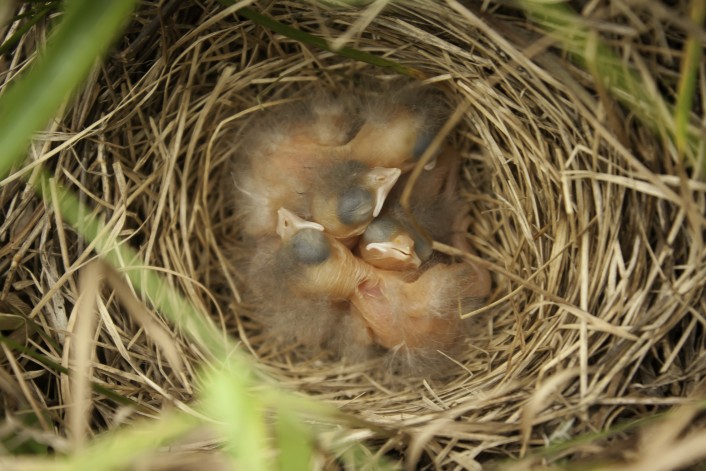Nestled within grasslands of the Carden Alvar, Bobolinks (Dolichonyx oryzivorus) can be observed as they prepare for, and carry out their breeding season. Famous for their unique appearance, Bobolinks sport a backwards tuxedo and a yellow cap.
The Couchiching Conservancy, along with partners such as Earth Rangers, have been tackling threats which endanger Bobolinks. One of the greatest threats relevant to Carden is loss of critical grassland habitat. As southern Ontario becomes intensely developed, prime Bobolink habitat is at risk. Ecosystems within the Carden Alvar remain as a sanctuary where conservation efforts can be focused in order to preserve this critical bobolink habitat.
An exciting initiative has begun in Carden where the Bobolinks are being tracked with geolocation technology. The Bobolink team in Carden, with the assistance of certified bird banders, have affixed geolocators to 12 adult male birds. The spatial location data will be retrieved in 2016 when they return the Carden Alvar for breeding.
In 2010, Bobolinks were designated as a ‘threatened’ Species at Risk by the Committee on the Status of Endangered Wildlife in Canada (COSEWIC). Due to their preference of agriculturally managed pastured and hayfield habitats, the Carden Plain in Ontario provides an ideal habitat for Bobolinks. Conservation of Bobolinks is strongly dependent on ensuring their habitat remains protected, so they are able to return each spring from their wintering grounds in South America.
In order to mitigate loss of grassland habitat in Carden, the Conservancy has been actively involved with programs such as the Species at Risk Benefit Exchange (SARBEX). In essence, when a developer impacts a Species at Risk (SAR) in Ontario through land use practices, they must provide compensation for that habitat loss. This is where the Couchiching Conservancy, and other organizations in Ontario, are offered the opportunity to ecologically restore properties of interest to benefit Bobolinks and other SAR birds in Carden.
This summer I have been assisting with several tasks pertaining to Bobolink conservation. My duties involve conducting point counts, nest monitoring and other ornithological-related surveys. These experiences have further developed my field skills and have contributed to important conservation work in Carden.
I find it fascinating to observe the daily life of a breeding Bobolink on the Carden Alvar. In the early spring, the males spent most of their time establishing territories. This often led to the birds chasing each other. Additionally, the robot-like call of the Bobolink can be heard throughout many pastures and hayfields in the region. Females, arriving soon after, do not offer the same exuberant call that the males make.
As May progressed the Bobolinks constructed their ground-based nests and started laying eggs. This is when the true excitement started. If the Bobolinks were successful in their breeding process, the young fledged from their nests around mid to late June; some even into July. Examples of factors limiting their success include being predated by foxes, coyotes, skunks and other wildlife. Trampling by cattle is may also be a limiting factor, since they are sometimes used for hayfield and pasture management.
Written by Cameron Curran, Summer Conservation Assistant.

